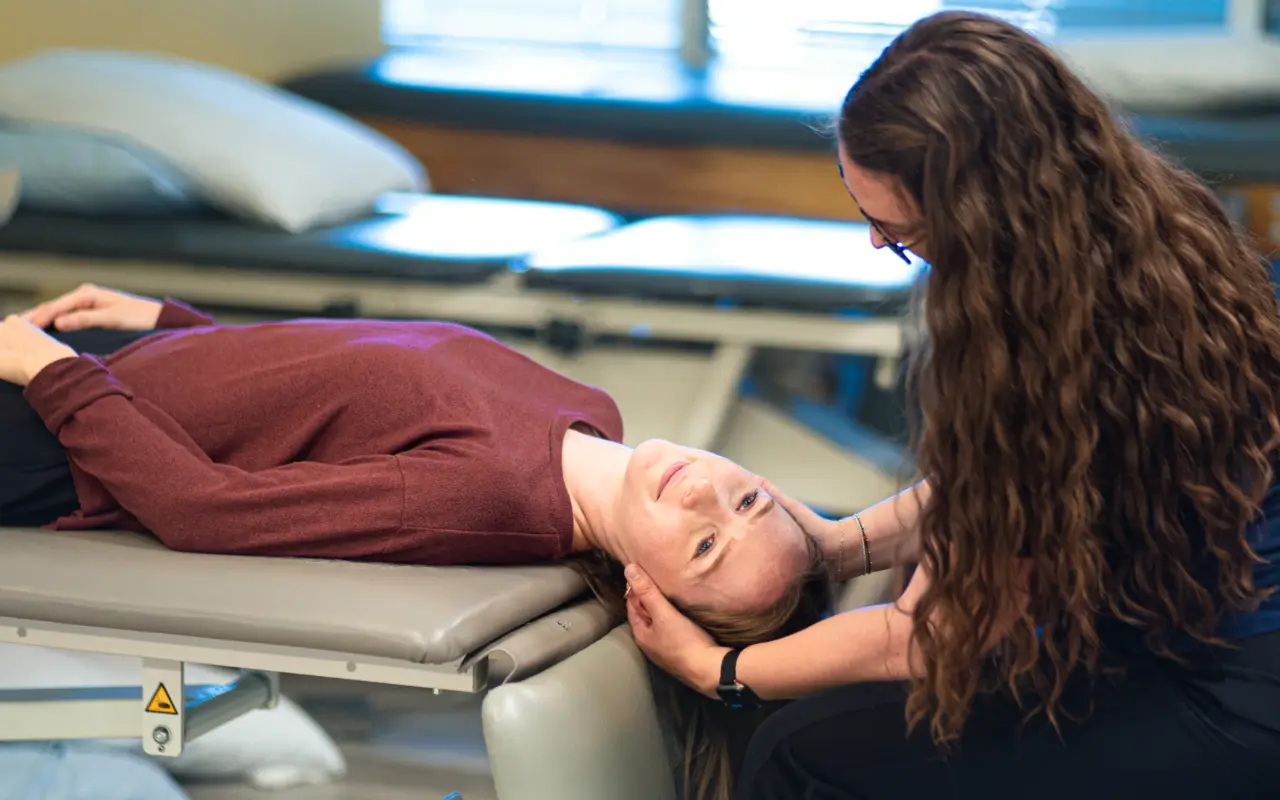By: Stephanie Gilboy, PT, DPT, Cert. VRS
BPPV, or benign paroxysmal positional vertigo, is caused by the displacement of otoconia in your inner ear.
Now, otoconia have been referred to as “crystals” or “rocks.” So, if you have heard those terms at any point, their real name is otoconia, but we will refer to them as rocks here.
Your inner ear is responsible for you to hear and to keep your balance. The rocks are located in a part of your inner ear called the utricle, which looks like a little sack. They help you know whether you are moving forward, backward, and side to side. They also help you stay upright.
Sometimes, due to head trauma, viral infection, or for really no reason at all, these rocks break off and get stuck in semicircular canals connected to the utricle. When they are in the semicircular canal, they wreak havoc. This is because there is a direct spinal reflex between the inner ear and eye muscles. This means that you cannot control this conversation between your inner ear and eye like you can with other bodily systems.
When the rocks are displaced, they make your eyes twitch in a rotary pattern called nystagmus, which is what causes the room-spinning dizziness. This is the hallmark symptom of BPPV.
To learn more about physical therapy for vertigo, read “Ditch the Dizziness, Physical Therapist for Vertigo” from the Spooner Blog
Treating BPPV
BPPV and vertigo symptoms are very debilitating. It can involve not only the room-spinning dizziness, but also nausea, headaches, throwing up, falls, and more. This is something that needs treatment right away.
The semicircular canals have openings at different angles to each other. Most likely, the posterior canal is involved, which opens up at a 90-degree angle to the horizonal canal. If you try to treat BPPV yourself, the rocks can fall into the horizonal canal, which causes constant vomiting.
Going to a vestibular therapist is vital because of the complexity of your inner ear. We can determine which ear and which canal is to blame for your symptoms and reposition the rocks. Spooner vestibular physical therapists will look at all of your symptoms, including a nerve screen, your neck’s range of motion, and your eye motions. Then, we will use gravity-dependent testing to determine where the rocks are.
We then use gravity dependent repositioning, such as:
- Epely
- Gafoni
- Casani
- Appiani, and
- Yokovino.
These maneuvers help us get your inner ear back in order and help resolve your symptoms quickly.
After we have resolved your BPPV, we will screen for vestibular hypofunction, which is a potential side effect of BPPV. This occurs because your brain, after being dizzy for a long period of time, will “turn the volume knob down” on your inner ear. This is helpful when the room feels like it is spinning, but it is not helpful once you have been treated. With this, when you go to turn your head, instead of feeling likely you are slowly turning from left to right, it will feel like you are whipping your head around.
There is also a high likelihood of BPPV reoccurring after you have been treated, so be sure to keep your local Spooner clinic’s phone number close-by.
Don’t stay dizzy! Schedule an appointment with a Spooner vestibular physical therapist as soon as your symptoms occur.

